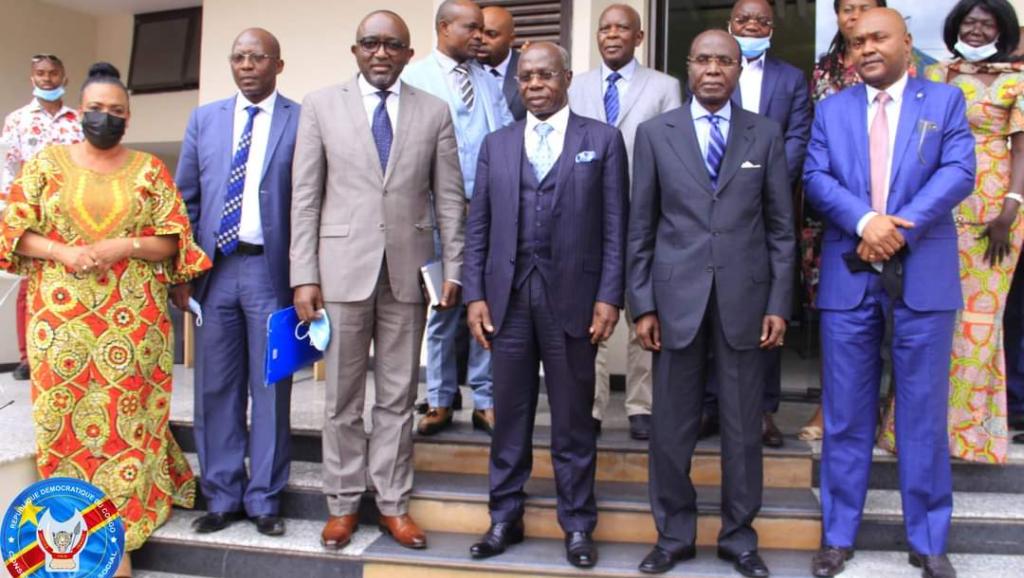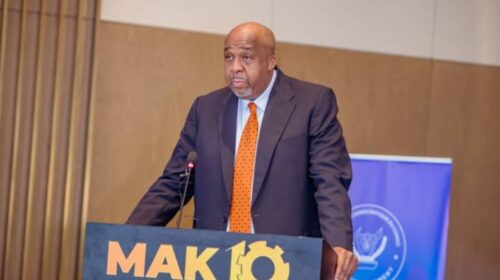6.5 billion USD loss to be reclaimed from the state in joint ventures between Gécamines and multinationals- DRC
For the President of the FEC and Chairman of the Board of Directors of Gécamines, what he qualifies as injustice must be corrected to allow the Congolese State to come within its rights in relation to the “unbalanced” joint ventures signed in early 2000s between Gécamines and multinational mining companies.
Beyond the structural imbalances in the joint ventures signed between Gécamines and its mining partners, the industrial and financial management practices of these multinationals tend to reduce the benefits for the Congolese State by maximizing their income and to exclude economic actors. local. This is the credo of Albert Yuma, chairman of the Board of Directors of Gécamines and chairman of the FEC, which he demonstrated during the academic meeting held on Monday 3 May at the Economic and Social Council, under the direction of Jean-Pierre Kiwakana, president of CES.
“Our country has been systematically looted and none of our partners, nor the NGOs which are traditionally giving lessons in moral matters, have dared to attack or criticize this economic and financial tragedy”, denounced the PCA of Gécamines in front of the Councilors of the Republic in his presentation entitled “The challenges of the revised Mining Code”.
According to the information revealed by the boss of the FEC, the Democratic Republic of the Congo was rolled down all the line in the contracts concluded by the Gécamines, state company, with the first multinationals which invested in the Congolese mines between 1996 and 2009.
An economic and financial drama
“The initial imbalance, in particular contractual, will unfortunately very quickly be found in the negative results of the majority of partnerships, characterized by a situation of indebtedness, sometimes extreme and for some by a situation known as of“ under-capitalization ”, hampering all possibility of distribution of dividends in the short or medium term for the partners of public enterprises in the State portfolio, ”he argued.
More concretely, Albert Yuma places the first cause in the investment spending of these multinationals, which were up 170% on average compared to the feasibility studies. “Out of five active partnerships TFM – BOSS MINING, KCC – RUASHI and KIMIN, at the time of our study carried out by Ernst and Young Paris, the average cost overrun observed compared to the feasibility studies was 170%, or 2.7 times the initial price. So that my point is clear, if a factory were to cost 1 billion in the study, in fact its cost was 2.7 billion on average ”, explained Albert Yuma.
This overrun, according to him, first of all led to additional borrowings and therefore increased financial charges as well as unforeseen depreciation charges, a double phenomenon which notably reduced the annual net income. He adds that since the initial loan is much higher, in addition to the interest, more principal must also be repaid which deprives the company of available cash in the event of a positive result. Note that the World Bank notes that overruns of 25% are commonplace all over the world. This means that 6.8 times less than those observed in the DRC.
A second cause of this financial package which deprives the Congolese part of benefiting from dividends, according to Albert Yuma, are financing expenses which were up 200% on average in these joint ventures.
“On the aforementioned partnerships, the average financial expense overrun was 200%, or three times the initial estimates. This means that the loan interest paid is three times higher than forecast, which in some partnerships has reached 700 million dollars instead of 230 million, on a billion and a half of turnover. Everyone will easily understand that these overruns have resulted in additional annual expenses that will reduce to nothing, when it existed, the operating margin linked to the activity and therefore the potential profit, ”said Albert Yuma, who believes that the first beneficiaries of this situation are the lenders who are most often linked to the foreign partner in the JV.
6.5 billion USD loss for the State between 2008 and 2016
Equally, the third cause would be operating expenses which were up 95% on average. He explains: “On the aforementioned partnerships, the average operating cost overrun was 95%, almost twice the initial estimates. This overrun resulted in additional annual charges that reduced the operating margin linked to the activity and therefore the potential profit. It is important to note that often the beneficiaries of this situation are the partners themselves through group companies, which benefit from subcontracting contracts. This situation,in which none of the main initial parameters of the feasibility studies have been respected and thanks to which all the cash generated by the projects have been divided for the benefit of lenders or subcontractors, makes a system that can be found in all partnerships almost at the ‘identical. A system where the entire value chain of the project – lives off the project, guarantees the project, but where both corporate tax and tax on securities for the benefit of the STATE, as well as dividends of GECAMINES are reduced to nothing or severely limited compared to what they should have been ”.that the tax on transferable securities for the benefit of the STATE, that the dividends of GECAMINES are reduced to nothing or strongly limited compared to what they should have been ”.that the tax on transferable securities for the benefit of the STATE, that the dividends of GECAMINES are reduced to nothing or strongly limited compared to what they should have been ”.
According to Albert Yuma’s projections, here is what Gécamines’ revenues should have been, assuming that operating and investment costs were similar to those estimated in the feasibility studies, “- Mining should have made it possible to generate positive net results from the first years of operation, thus allowing the STATE to collect significant tax revenues (taxes on profits, taxes on securities), i.e. nearly 3 , An additional 3 billion USD. -GECAMINES could have benefited from estimated dividends over the period 2008-2016, estimated at 1.4 billion USD ”.
All in all, knowing that the production of GECAMINES partnerships represents more than 50% of the annual production of copper and cobalt in the DRC, Albert Yuma estimates the loss for the State at around 6.5 billion dollars over the period. 2008 to 2016. In addition, he clarified that this only applies to the copper and cobalt sector. It would surely be necessary to audit the other sectors of industrial production and particularly gold to assess the loss as well. And so to redress this injustice, he advises the Congolese state to recruit an international audit firm to investigate this “economic and financial drama”.
![]()





